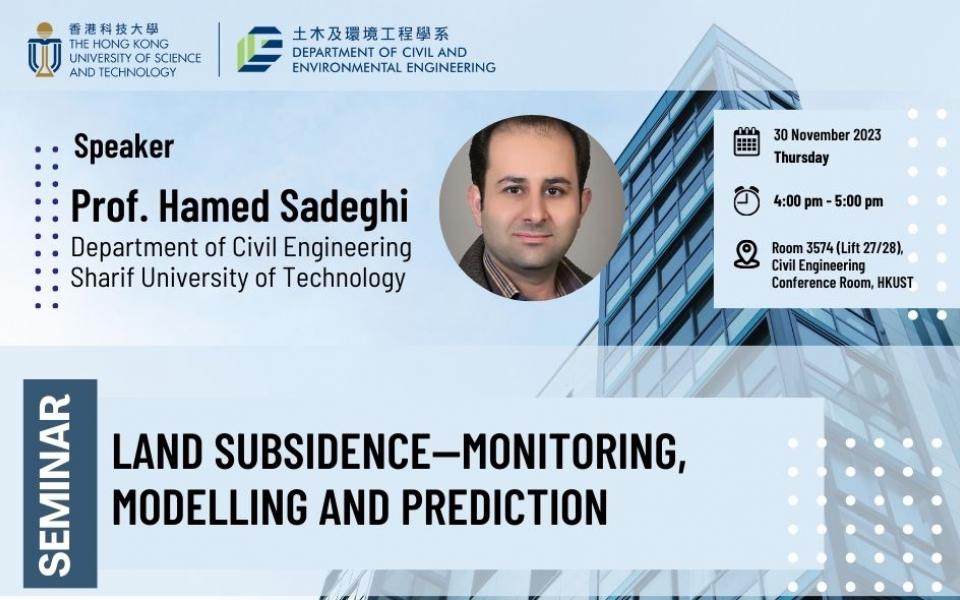[Amendment] Civil Engineering Departmental Seminar - Land Subsidence—Monitoring, Modelling and Prediction
Supporting the below United Nations Sustainable Development Goals:支持以下聯合國可持續發展目標:支持以下联合国可持续发展目标:
Land Subsidence—Monitoring, Modelling and Prediction
Land subsidence has been considered as a worldwide geohazard threatening several countries; the most affected ones are China, Mexico, USA, Italy and Iran. Among them, Iran became a global hotspot for groundwater depletion due to providing fresh water to almost 90 million people following unsustainable water resources management. Under such circumstances, ground subsidence become the main geohazard affecting a variety of infrastructures including power transmission network. Therefore, this study aims to provide a framework for monitoring, modelling and prediction of land subsidence. First, the land subsidence susceptibility map (LSSM) of Iran is generated through the combination of full consistency decision-making (FUCOM) and geographical information system (GIS). The developed framework prioritizes several causative factors, including water stress, groundwater depletion, soil type, geological time scale, and rainfall amount. The LSSM is validated against interferometric synthetic aperture radar (InSAR) for some megacities. The results revealed critical regions—Tehran, Qom, Yazd, Isfahan, Kerman, and Mashhad—experiencing subsidence rates as high as 15–20 cm/year. As InSAR predictions may be considered insufficient for extrapolation of the subsidence under varying water management policies in future, a geotechnical saturated-unsaturated modelling framework is proposed, considering the Biot theory and the concept of suction increase (SI) yield loci of the Barcelona Basic constitutive Model. The framework is implemented in a pilot area in Qom province. The results confirm that pure consideration of consolidation theory for saturated strata is insufficient, so the deformation induced in vadose zone should also be considered. Lastly, some preliminary results of structural analyses will be presented for isolated and in-line lattice towers subjected to land subsidence phenomena.
Hamed Sadeghi is an Assistant Professor in the Department of Civil Engineering at Sharif University of Technology. He holds all the academic degrees with First-Class Honors and he is the first graduate of the Dual-Degree PhD program between the Hong Kong University of Science & Technology and Sharif University of Technology in all disciplines with notable educational and research distinction approved by Iran’s National Elites Foundation. He is the founding director of the Green Geotechnology Laboratory as a new academic infrastructure in civil and environmental engineering to pave the ground for advanced research on sustainable development and urban greenery. He has received numerous scientific and cultural awards during the past three decades including the honorary diploma of KANS 2021 international competition, the national distinguished young research assistant professor, the distinguished university student, and the best PhD thesis in civil and environmental engineering. Having published some 80 research articles, he has been an active member of the international technical societies and a frequent reviewer for about 30 peer-reviewed ISI journals. He is currently the President of Iranian Society for Porous Media (Iran InterPore), the Chair of TC106 of Iranian Geotechnical Society, the Director of Geotechnical Group, the scientific member of Tehran Urban Planning and Research Centre and TAVANIR Co., and the Coordinator of the HKUST-SUT Dual-Degree PhD scheme.
